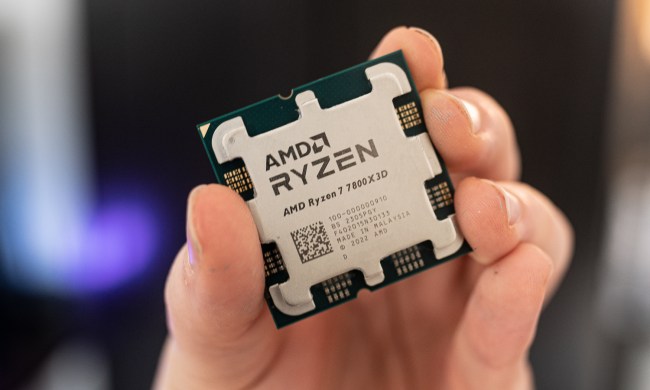
AMD’s Threadripper 3990X isn’t just a super-powerful CPU on paper. Just days after its general release, it’s smashed a number of world records, breaking those set by its 32-core sibling, the 3970X, as well as Intel’s best Xeons, and even some dual-socket machines. AMD’s 3990X is making just about every other processor on the planet look pedestrian in comparison.
AMD’s Ryzen processors have always offered impressive multithreaded performance, from the first generation to the third. But with the instructions per clock improvements, the Zen 2 architecture, the chiplet design, and the 7nm process node shrink of the third-generation, it’s broken new ground. Alongside up to 16-cores in a mainstream desktop CPU with the 3950X, AMD’s Threadripper 3990X has ushered in a whole new era of high-end desktop performance. Its 64 cores, 128 threads, 288MB of combined cache, and 4GHz+ boost frequency, make it the most powerful CPU ever outside of a server room.
And even there it’s competitive.
The first record to fall following the 3990X’s debut on February 7 was GeekBench3 — Multi Core. Supercooled by liquid nitrogen and running on an all-core boost frequency of 5,375MHz, the 3990X scored a massive 293,771 points. That’s 10,000 points more than another 3990X benchmarked that same day, and more than 100,000 points more than the 3970X, which originally took the record in December last year.
That was followed by a GPUPi for CPU record, where the same 3990X running at 5,475MHz across all cores stole the top spot, again beating out the 3970X. The same again with Cinebench R15, and wPrime 1024m a couple of days later.
What’s so impressive about the Threadripper 3990X in each of these cases isn’t just the speed with which these records were taken, but the dramatic fashion. Between 2013 and June 2019, just before the release of third-generation Ryzen CPUs, the GeekBench3 multi-core score had increased from 38,000 to 135,000. Just six months later, the 3990X has more than doubled that score.
In Cinebench R15, the score increased from 1,000 in 2013, to 10,000 (with four Xeon CPUs) before the release of third-generation Ryzen CPUs. The 3990X increased that to 18,000 overnight.
These benchmarks are designed with multi-core CPUs and multiple CPUs in mind, so they scale far better than your average game or piece of desktop software. But the performance leap made with the 3990X is nothing short of staggering. Especially when you consider the state of the market. Intel’s 10th-generation HEDT CPUs, like the 18-core 10980XE, launched in the last few months of 2019 with a near-universal 50% price cut over their predecessors. And they were still dead on arrival, with no competition to offer AMD’s Threadrippper 3000 CPUs, even falling behind the mainstream Ryzen 3000 CPUs in some cases.
AMD didn’t need to release a 64-core Threadripper CPU. Its 32-core 3970X was more than enough to take the performance crown from Intel in all the benchmarks that matter for these kinds of chips. It may even eat into AMD’s own server business. AMD Epyc CPUs sport up to 64 cores but offer lower boost clocks than their Threadripper counterparts. They enjoy eight memory channels and more PCIExpress lanes, but a 64 core Threadripper CPU is, in some cases, faster than the 64 core Epyc alternative.
We’re already seeing some of this cannibalization of AMD’s own server market with the likes of Blur Studios using Threadripper 3000 CPUs for movie rendering. That’s a job typically reserved for server chips.
In releasing the 3990X, AMD has leapfrogged everyone, including itself, and ended up so far ahead Intel may well take years to recover, with no sign of its upcoming CPU generations offering anything like the power of AMD’s frontrunner processors. Especially at the top end.



